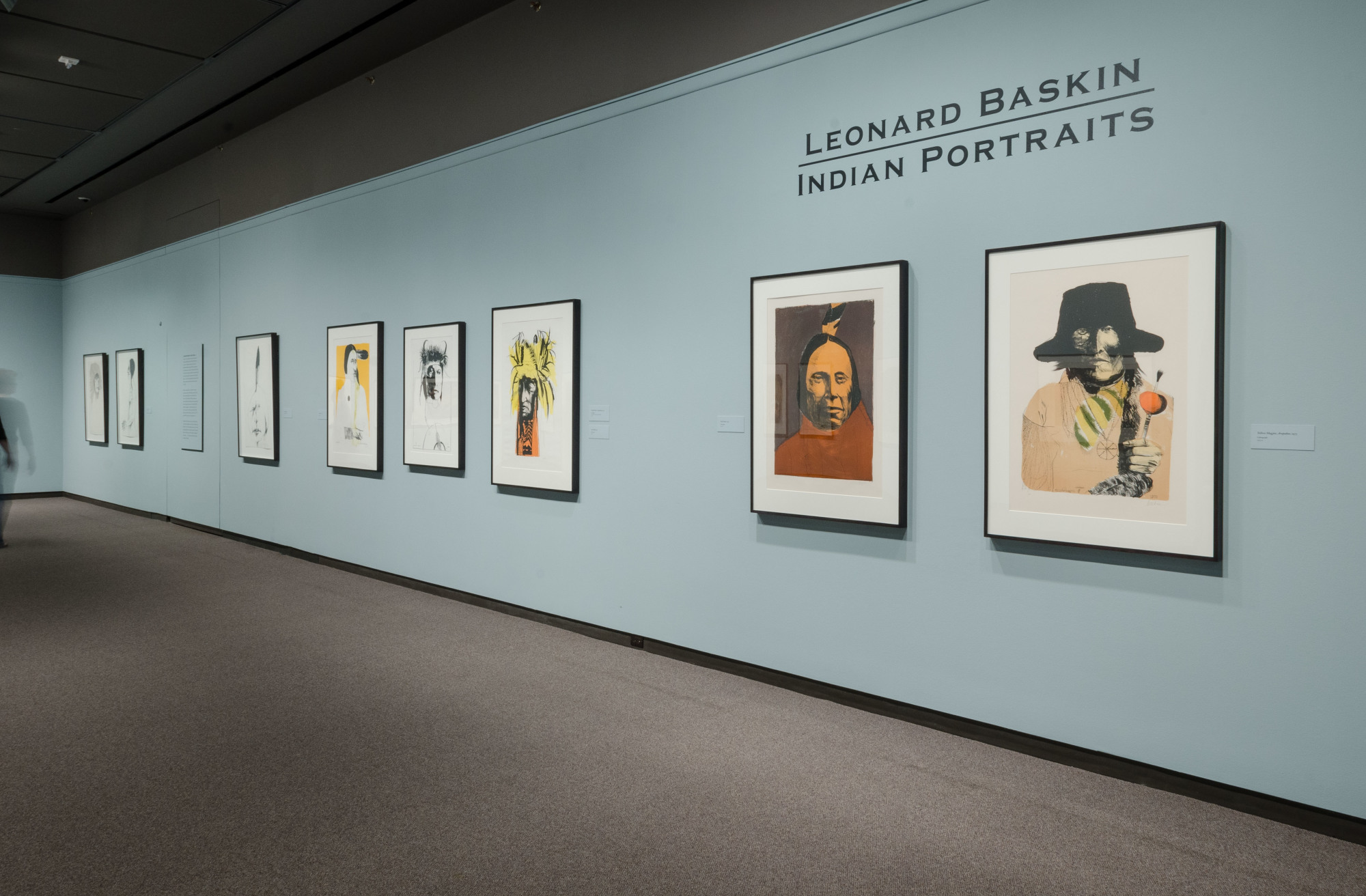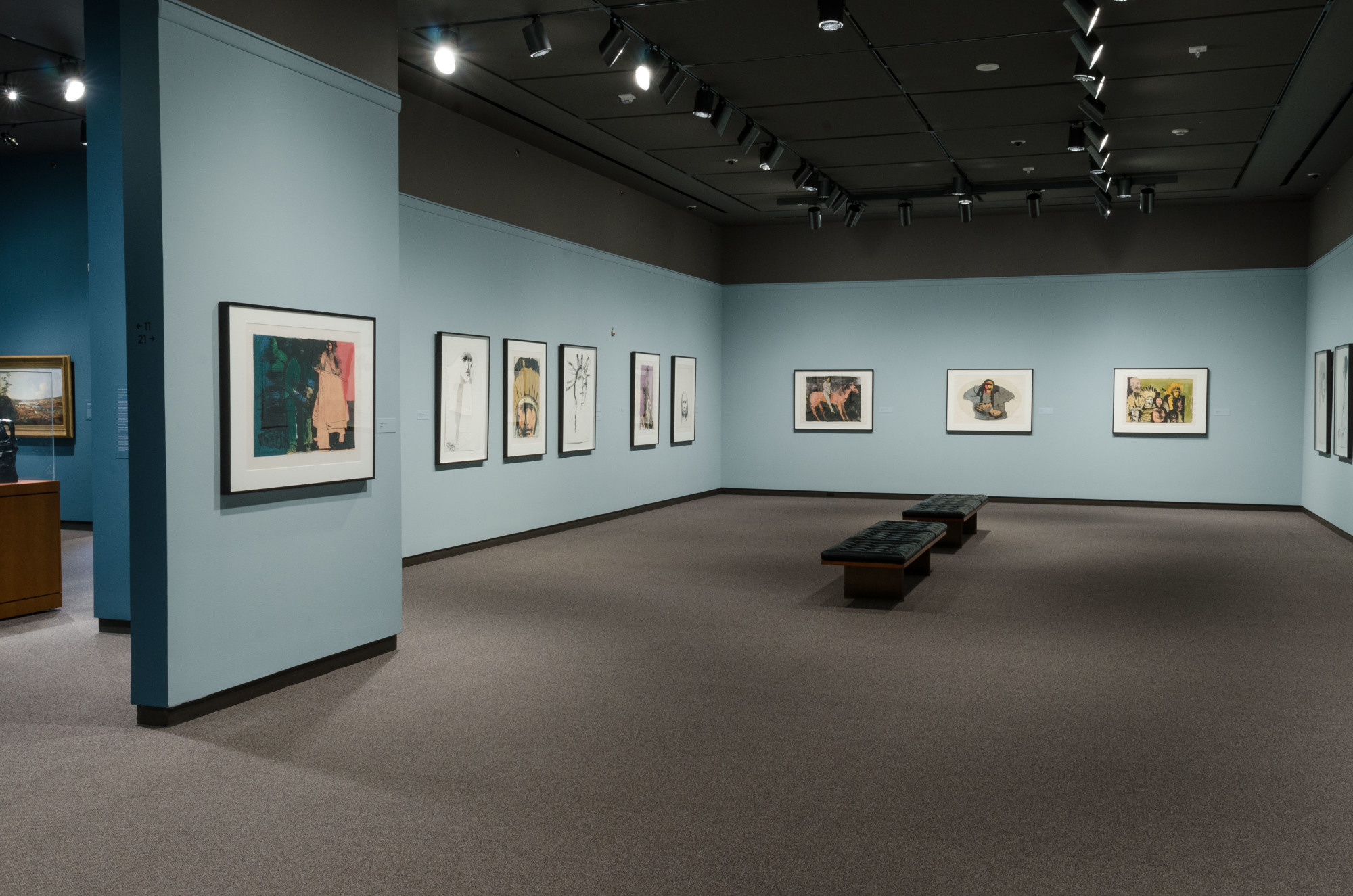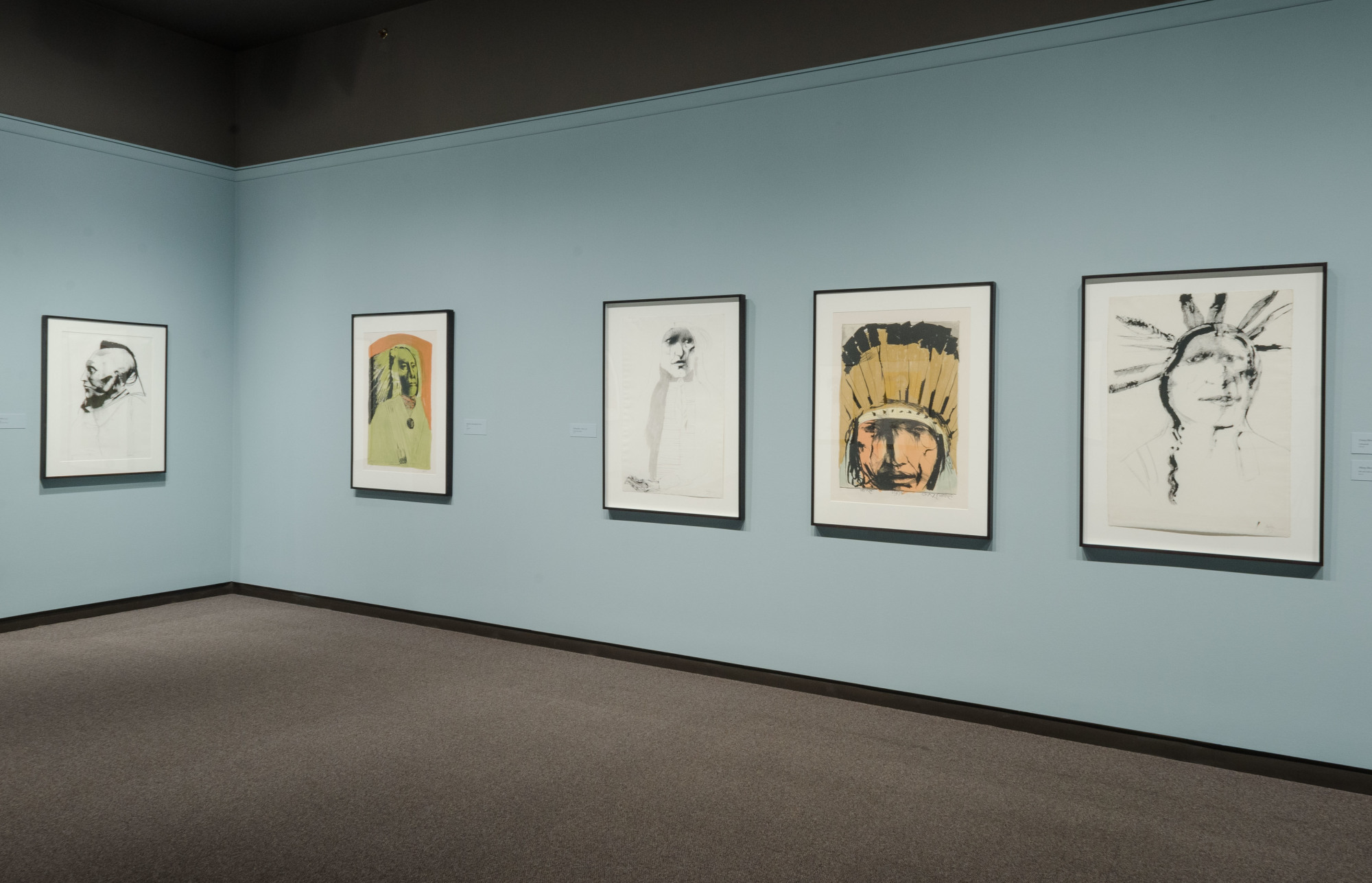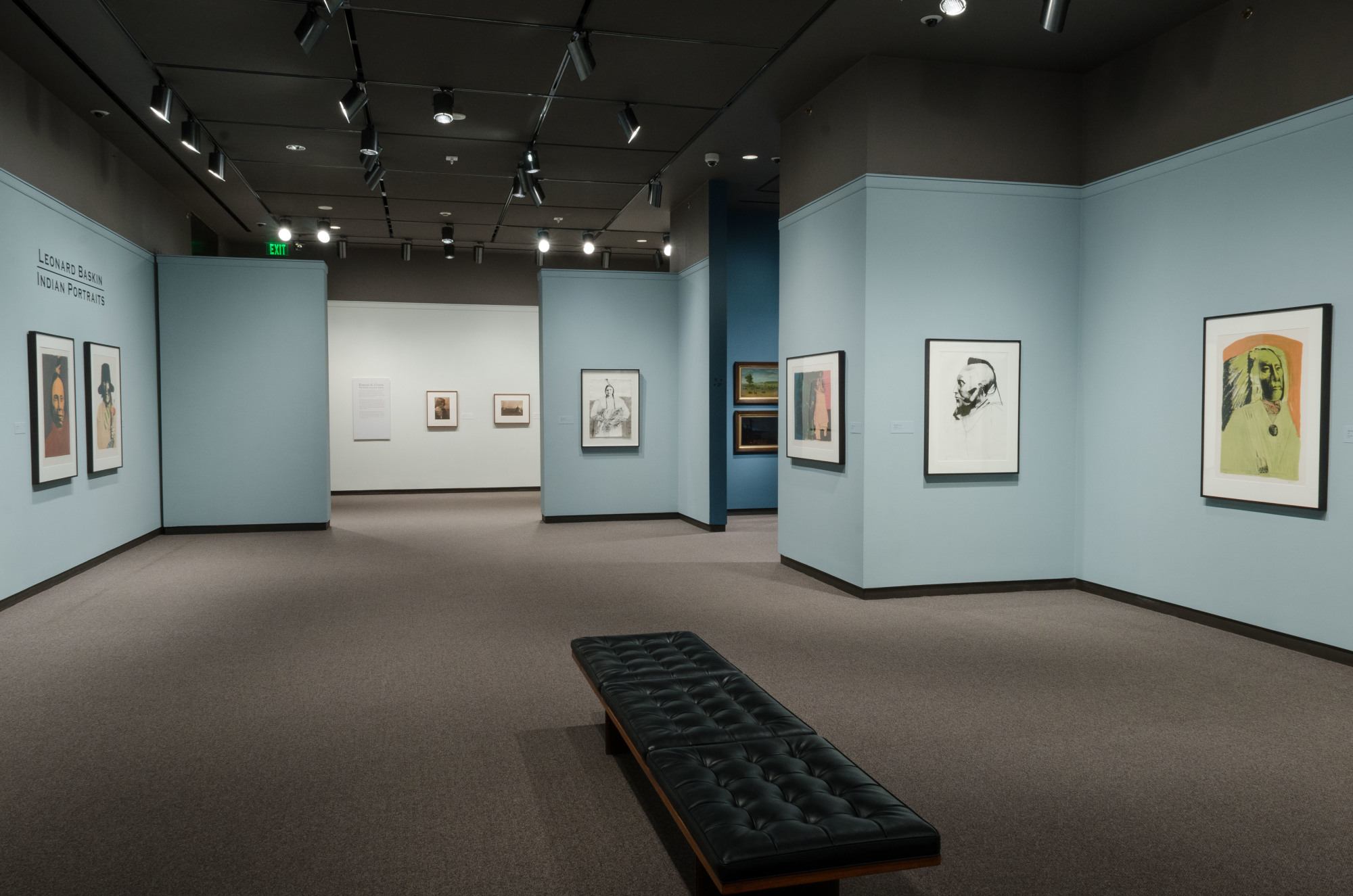Leonard Baskin: Indian Portraits

In a distinguished career that spanned much of the20th century, Leonard Baskin (1922–2000), became known for his accomplishments as a sculptor, printmaker, illustrator, book-artist, and teacher. Baskin’s wide-ranging intellect, fueled by an abiding sense of social justice and a deep respect for humanity, led to a practice of working thematically. Such was the case with a series of large-scale prints and drawings of American Indians, which he began in the late 1960s and returned to over the course of the next several decades.
Baskin’s conceptual framework, nourished by his admiration for American Indian life and culture, evolved as he researched the project. He took inspiration from Thomas Berger’s historical novel Little Big Man, published in 1964, as well as the activities of the American Indian Movement, founded in 1968. The photographic portraits of American Indians taken by Edward S. Curtis and Frank A. Rinehart also became a point of departure, encouraging Baskin to focus on the faces of his subjects. This exhibition, comprised of nearly 20 prints and drawings created between 1971 and 1974, includes Baskin’s prized images of Chief Gall, Crazy Horse, and Sitting Bull (whom he considered the real heroes of the legendary Battle of the Little Bighorn), in addition to striking images of well-known figures from the Arapaho, Assiniboine, Cheyenne, Crow, and Sioux nations.
Exhibition Highlights
Slide Controls
Slides
Installation Photos
Click a button below to open in gallery. Activating any of the below buttons shows the installation photos gallery
















